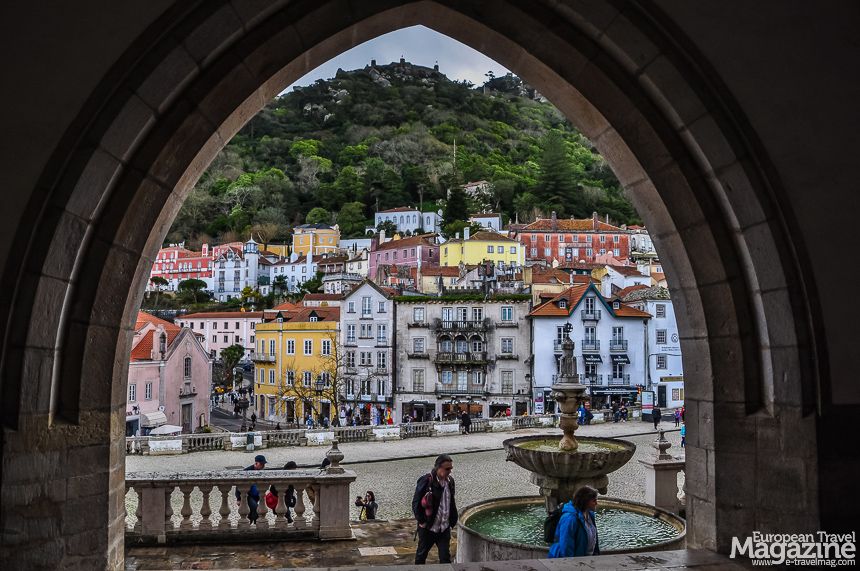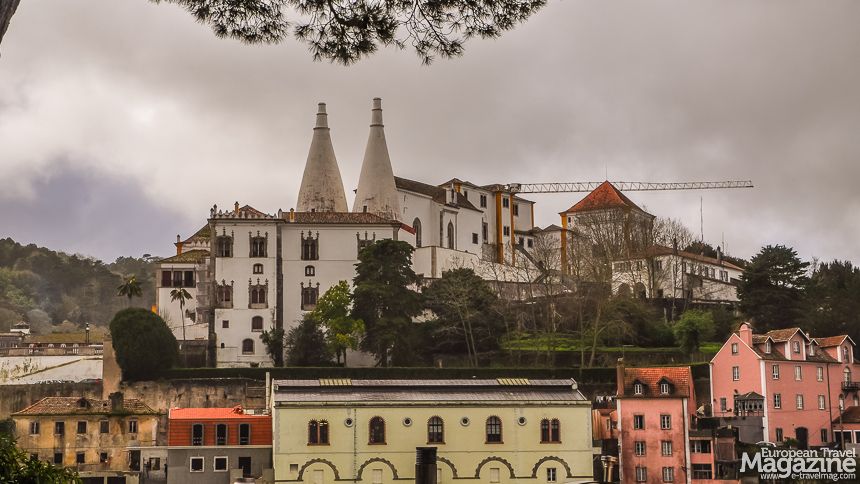Follow in the footsteps of US-based Saul Schwartz and discover the magic of the Portuguese capital. What are the most important tourist attractions in and around Lisbon? Is Sintra National Park really worth taking a full day out of your busy schedule to visit? Saul recommends a free walking tour and further exploration of this World Heritage Site.

Saul Schwartz
In October, my wife Fern and I spent four days in Lisbon and Sintra, two of which were spent in the historic center of Lisbon, one in the beautiful Belém region, and one in the Sintra National Park. You can read about What to see in Lisbon and Belém in this article. Here’s our guide to a day trip to Sintra:
In Sintra, we once again booked a “free” tour through the Guru Walk website in advance with a tip. Fern and I met our tour guide at Largo Dr. Virgílio Horta, next to the city hall. We had the pleasure of meeting Gabriel again, one of the most informative guides on our hike. This tour lasts approximately 2 hours and is ideal for visiting Sintra. Gabriel offers lots of tips and advice. He also told us some legends from the past, including the myth of the secret portal.
Gabriel begins the tour by showing us a range of scenic spots, from towns to rippling mountains, Romantic architecture and glittering palaces. The entire town is designated a UNESCO World Heritage Site.
fountain

We walked past several beautiful tiled memorial fountains. The Moorish fountain was built in 1922 and has lovely blue tiles surrounding the oval spout. Gabriel explains how sound travels from one side of the fountain structure to the other. It is located in Volta do Duche. The Piso Fountain was built in 1931 as a semicircular structure located on Avenida Almeida Garrett. It is decorated with Renaissance-style circles, decorated with tiled panels and stone reliefs representing children holding cups and pitchers.
Next, we spent some time getting to know the National Palace of Sintra. The palace was ruled by Portuguese monarchs for nearly eight centuries. Since Gabriel recommended this as the top historical attraction in Sintra, we ended up visiting the palace after the walking tour.
The tour ends at Tivoli Setia Palace, a former palace that is now a five-star hotel. This is a romantic place full of 18th century atmosphere. We had a packed lunch in the large public garden outside the hotel.

In the afternoon we had time to visit one of the palaces. We chose to visit the National Palace of Sintra, located in the heart of the old town (Sintra Villa). During the walking tour, as we looked at the exterior, Gabriel explained that the palace was built in three different periods.
The main part has a Gothic appearance, with a large kitchen beneath two tapered chimneys. This part was built in the 14th century. The second part is in Moorish style and was built by Manuel I in the 16th century. The last part is a later Portuguese-style building. The entrance fee is 10 euros per adult. The palace now operates as a museum, but is considered the best-preserved royal palace in Portugal.
We first walked through the walled gardens outside the palace. The garden features colorful tiles. Highlights of the interior include the grand ceiling of the former ballroom, which is painted in 17th-century paint and is divided into octagonal panels with swans. In the Pegasus Hall, King Jado I had a magpie painted on the ceiling to scold the ladies in the palace for gossiping, which he thought sounded like the cry of a magpie. The interior also features beautiful tiled walls and a striking chandelier. One of the bathrooms has a beautiful stained glass window.
- It is useful to have a guide for planning purposes. We used the Lisbon – Eyewitness Travel Guide. The “Visit the City” app is also useful.
- October was sunny but warmer than expected, with highs over 80 degrees Fahrenheit. A sun hat is highly recommended.
- There is a maximum fee of EUR 2 to use the public bathrooms. Cafes and restaurants charge similar fees if you just go to the restroom instead of eating. For this reason, it’s good to have change in your pocket.
- Almost everyone in Lisbon and Sintra speaks English. Locals seem to appreciate speaking a little Portuguese.
- Fern and I originally planned to stay in Lisbon for five nights, but our original flight was canceled and we missed the first day of our trip. Our conclusion was that four nights in Lisbon allowed us to visit most of the main attractions while still enjoying a day trip to Sintra.
We spent the third day of our trip in Sintra, the most popular day trip from Lisbon for tourists.
We took the train from Rossio train station, very close to Rossio metro station. Although we didn’t buy advance tickets, the line to buy tickets was short. Trains run approximately every 30 minutes and make several stops along the way. Due to unusual delays, the trip will take more time to depart and less time to return.
This train ticket is not included in our metro pass but only costs €2.30. The ride was comfortable but crowded in all directions.
If you want to know more about Sintra, check out Portuguese Palaces: Sintra or A real Jurassic Park in central Portugal – Just one hour’s drive from Lisbon.
Saul lives in Alexandria, Virginia, and has lived in Washington, DC since 1984. He enjoys traveling around Europe with his wife and family, and particularly enjoys interacting with local residents and learning about life in their cities and countries.
Saul has previously shared his travel insights with us. read his story Visit South West Ireland – Limerick, Clare and Galway or check out his travels Modern Athens – beyond the Acropolis or his obsession Vatican: The Pope’s Rome.







